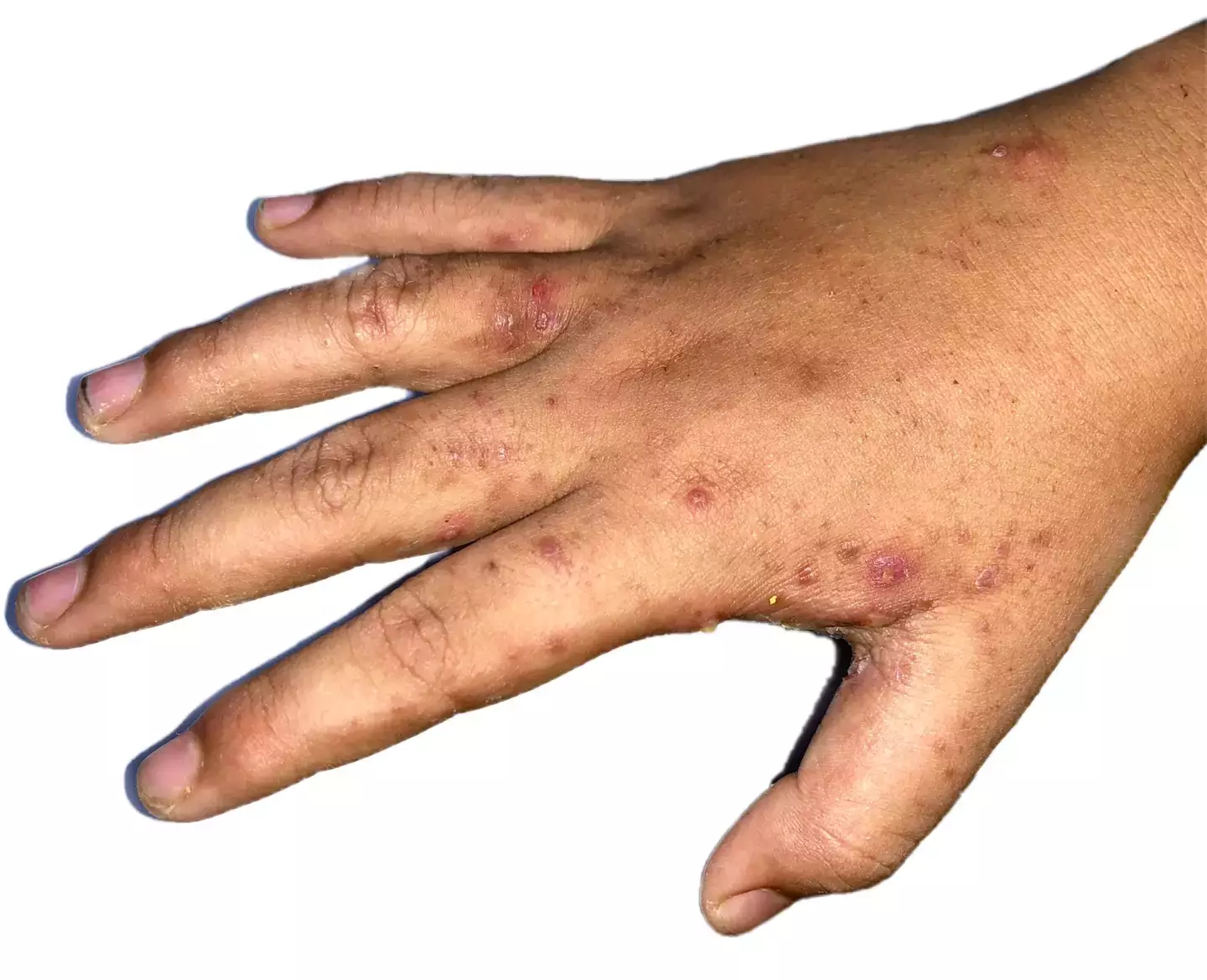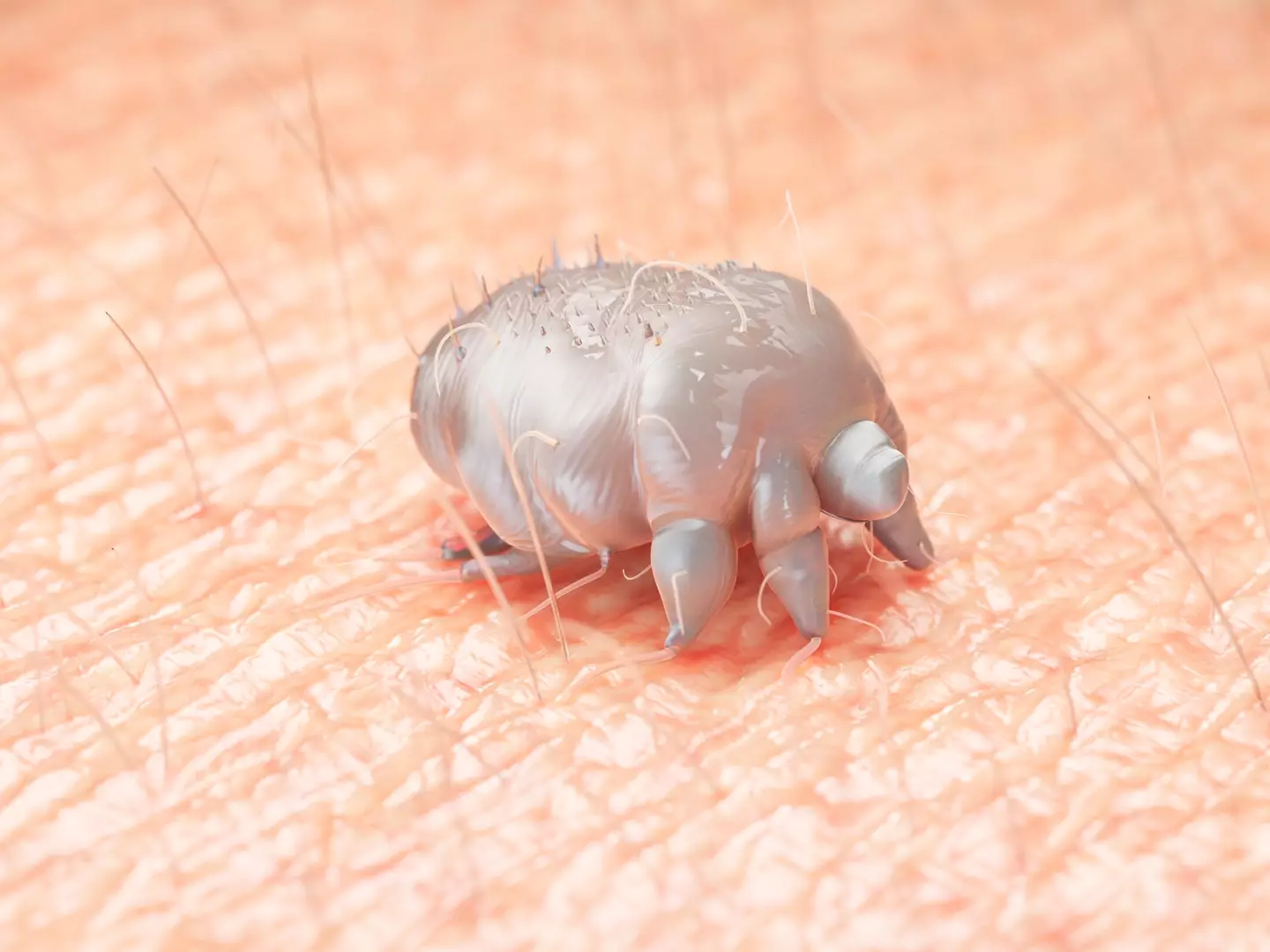The clocks have gone back which means we are officially in the era of darker, colder nights. Usually, this is accompanied by falling a little under the weather at some point or another in the run-up to the new year as bugs and nasties spread around society.
But this year, we're at risk from other horrible things that are looking to set up shop in our bodies.
It's not that they don't exist all year round. It is more a case of these infections are returning and in stronger numbers than modern society has ever really seen.
Enter the world of Victorian diseases, which are making a name for themselves in 2024.

Cuts on a persons hand; usually a sign of a scabies infection (Getty Stock Images)
Known for being untreatable killer infections up until the early 20th century, they were once commonplace if you were from an impoverished and malnourished background.
But while we thought we'd called a day on most of these infections - we're talking the likes of syphilis, scabies and scurvy - due to the advances of modern medicine, they are spreading across the UK in a way that hasn't been seen for some time.
Victorian diseases return
GPs in the UK have in recent weeks been warning Brits about symptoms of scabies - a disease usually associated with Victorian workhouses - as the infection spreads across the UK; particularly in northern England.
Scabies is where parasitic mites burrow in the skin of a person before laying eggs, with their track marks and eggs visible to the naked eye and looking like tiny cuts. And while it is easily treated, it can end up being life threatening if you have scabies and do not treat it, with it potentially causing secondary infections.

The syphilis bacteria up close (Getty Stock Images)
Professor Kamila Hawthorne, the chairwoman of the Royal College of GPs, said: "While not a serious condition, scabies can be very itchy and irritating.
"If not properly treated, it can spread and increase a patient’s risk of complications, such as secondary skin infections or make existing skin conditions worse."
Why are Victorian diseases spreading in the UK?
Last weekend, the British Association of Dermatologists issued a rather rare alert for the 'unusually high' rate of scabies. It came days after a similar warning for scurvy, with people developing the condition due to a lack of fruit and vegetables in their diet.
And The Sunday Times reports that cases of the sexually transmitted disease syphilis are at there worst since 1948.
All in all, it paints a pretty grim picture for UK public health.
Dr Tess McPherson, of the British Association of Dermatologists, said scabies could be put down to a few important factors - mixing at the beginning of the university year, slow treatment once symptoms develop and not isolating after noticing symptoms.

CGI of a parasitic mite beginning to burrow into a person's skin (Getty Stock Image)
"The surge in cases that we saw in September may in part be explained by students returning to university, with cases spreading through halls of residence," she said.
“If even one person in a group doesn’t treat, then reinfection can easily occur, and scabies can continue to spread. Treatments are available for scabies both over the counter and through GP, but they need to be used as instructed to ensure they work.
“While we don’t know for certain what is driving the number of cases up, this has been something we have been seeing for the last few years. Factors in the ongoing infestations seem to be delays in diagnosis, delays in beginning treatment, and not using treatments to full effect, which can lead to reinfection."
On the spread of syphilis and other STIs, chief medical officer Professor Sir Chris Whitty said a fall in public funding was making the situation worse, saying syphilis is a 'very dangerous disease with multiple complications'.




















 English (US) ·
English (US) ·